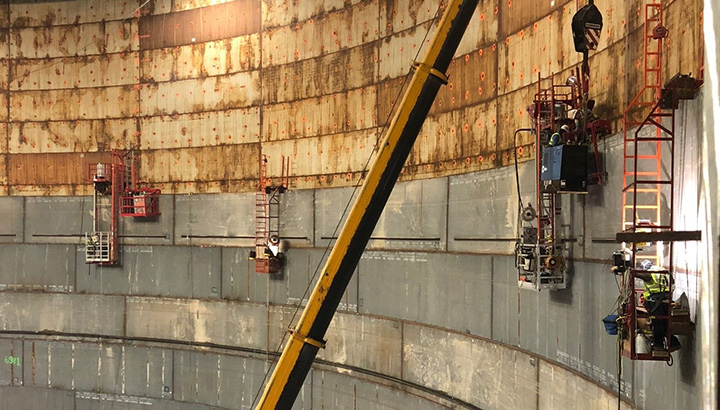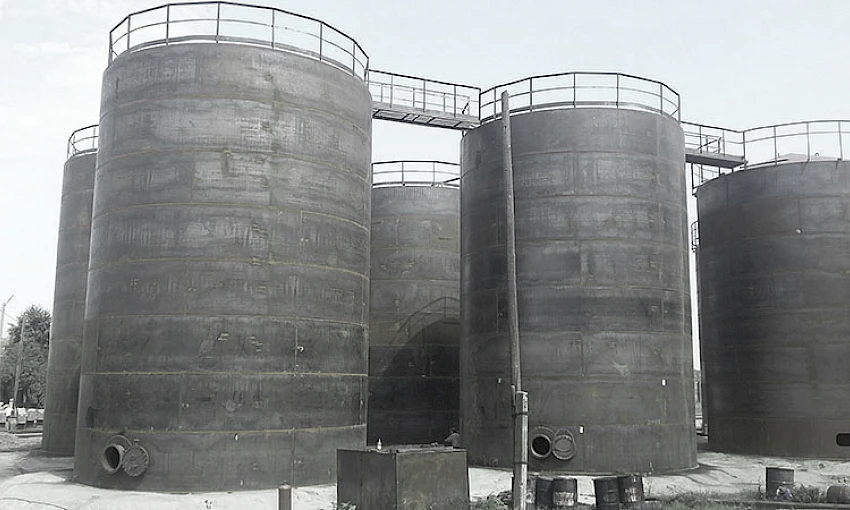Key Reasons Why API 650 Welding Inspection Is Vital for Construction Task
Wiki Article
Understanding the Importance of Welding Evaluation in Top Quality Assurance Processes
Welding inspection is an important element of quality control in construction and production. It assures that welds comply with established criteria, which is essential for architectural integrity. Numerous evaluation methods, from aesthetic to ultrasonic testing, help identify problems early. This aggressive strategy not only prevents expensive repair work yet likewise enhances security. Understanding the subtleties of welding examination can reveal its more comprehensive ramifications for industry compliance and reputation. API 650 Welding Inspection. What lies underneath the surface of these methods?The Duty of Welding Examination in Quality Control
While welding is a crucial procedure in various markets, its top quality and stability pivot substantially on effective inspection methods. Welding inspection acts as a protect, making certain that welds meet established standards and specs. This process not just recognizes problems but likewise examines the total craftsmanship, consequently contributing to the safety and longevity of bonded structures. Evaluations are integral to high quality assurance, as they help preserve and prevent expensive failures conformity with market regulations. By utilizing proficient assessors, organizations can enhance their functional effectiveness and promote their credibilities. In addition, the understandings acquired from assessments can educate continuous improvement, resulting in far better techniques and training for welders. Ultimately, welding inspection serves as a vital web link in the quality control chain, making sure that every joint is trustworthy and capable of standing up to the roughness of its desired application. This diligence is necessary for the stability of framework and the safety of end users.Sorts Of Welding Inspections
Welding assessments include a range of approaches created to assess the high quality and honesty of welds. These inspections are important in guaranteeing compliance with sector standards and specifications. Typical kinds of welding examinations include aesthetic examination, which enables instant identification of surface abnormalities; ultrasonic screening, which makes use of high-frequency acoustic waves to detect interior flaws; and radiographic testing, employing X-rays or gamma rays to disclose weld integrity underneath the surface (API 650 Welding Inspection). Additionally, magnetic fragment testing is utilized to determine surface and near-surface gaps in ferromagnetic materials, while dye penetrant testing provides a method for disclosing surface-breaking flaws. Each sort of assessment serves a certain objective, adding to the total quality control process. By utilizing a combination of these methods, examiners can provide a thorough analysis of welding high quality, inevitably making sure the safety and security and integrity of bonded structuresTypical Problems Spotted in Welding
A selection of common problems can take place during the welding procedure, affecting the integrity and performance of bonded structures. These flaws consist of porosity, which involves caught gas pockets within the weld, deteriorating its stamina. Cracks may likewise develop as a result of fast air conditioning or improper joint design, bring about potential failing under tension. Incomplete blend happens when there is inadequate melting of the base steel, leading to weak bonds. One more flaw, undercutting, involves the removal of base metal along the weld edge, developing a substantial structural weakness. Additionally, excessive spatter can affect the look and require further cleansing or repair. Ultimately, misalignment can result in unequal weld grains, endangering the total top quality. Determining these problems early through appropriate inspection techniques is important to assure the dependability and security of welded components, ultimately protecting the efficiency of the whole structure.
Benefits of Normal Welding Assessments
Regular assessments play a significant function in maintaining the top quality and security of bonded structures, specifically in light of the typical issues formerly detailed. These examinations offer a chance to recognize and correct problems prior to they escalate right into major problems, guaranteeing architectural stability. By identifying imperfections early, organizations can reduce repair expenses and stay clear of prospective project hold-ups.Furthermore, routine welding inspections improve conformity with market criteria and laws, cultivating count on amongst stakeholders. This adherence not just protects the firm's reputation however likewise adds to improved safety for personnel and the general public.
Regular inspections facilitate much better training and ability growth for welders, as comments from evaluations can guide improvements. click here for more info Ultimately, the benefits of routine welding inspections extend past immediate quality control, promoting long-lasting functional effectiveness and dependability in bonded structures.
Best Practices for Effective Welding Evaluation
Executing finest techniques in welding examination is important for assuring the highest criteria of quality and security. Initially, examiners should be adequately trained and certified, possessing a comprehensive understanding of welding methods and products. Making use of innovative evaluation technologies, check this site out such as ultrasonic screening and radiography, enhances the discovery of problems that may not show up to the nude eye. Developing a clear examination plan, describing the standards and regularity of assessments, guarantees uniformity and thoroughness.

Recording all findings diligently is vital for traceability and liability. Routine calibration of assessment devices guarantees accuracy, while preserving a well organized and tidy work area minimizes the threat of contamination. In addition, cultivating open interaction amongst staff member helps with the sharing of insights and promotes a culture of quality. By sticking to these finest methods, companies can notably improve their welding quality guarantee processes, eventually resulting in much safer and a lot more reliable items.

Frequently Asked Questions
What Certifications Are Required for a Welding Assessor?
A welding examiner usually calls for certification from acknowledged organizations, such as the American Welding Culture (AWS) or the International Institute of Welding (IIW), together with appropriate experience and knowledge in welding processes and quality requirements.Just How Frequently Should Welding Inspections Be Done?
Welding inspections should be performed on a regular basis, usually at various project phases, additional hints consisting of before, during, and after welding procedures - API 650 Welding Inspection. The regularity commonly depends on task specs, governing requirements, and the intricacy of the welds involved
What Are the Costs Linked With Welding Assessments?
The prices related to welding examinations vary extensively, usually varying from a few hundred to several thousand dollars, depending on aspects like evaluation kind, task dimension, and area, impacting general job budgets and timelines.Can Welding Inspections Be Performed Remotely?
Yes, welding evaluations can be conducted remotely making use of advanced technologies such as drones, cams, and ultrasonic testing. These approaches enable examiners to assess weld stability without being literally present, improving efficiency and safety and security in different atmospheres.Just How Do Evaluation Outcomes Effect Job Timelines?
Examination results can greatly influence task timelines by determining issues early, bring about required rework or modifications. Delays might occur if inspections reveal concerns requiring resolution, inevitably influencing general job completion and budget adherence.Welding assessments include a variety of techniques developed to assess the top quality and honesty of welds. Typical kinds of welding inspections include visual assessment, which allows for immediate identification of surface area abnormalities; ultrasonic screening, which uses high-frequency audio waves to detect interior defects; and radiographic testing, using X-rays or gamma rays to disclose weld honesty below the surface. Consistent assessments help with far better training and skill growth for welders, as comments from inspections can lead enhancements. Executing best methods in welding inspection is important for ensuring the greatest standards of high quality and safety. Welding examinations ought to be carried out routinely, commonly at different project stages, consisting of before, during, and after welding processes.
Report this wiki page